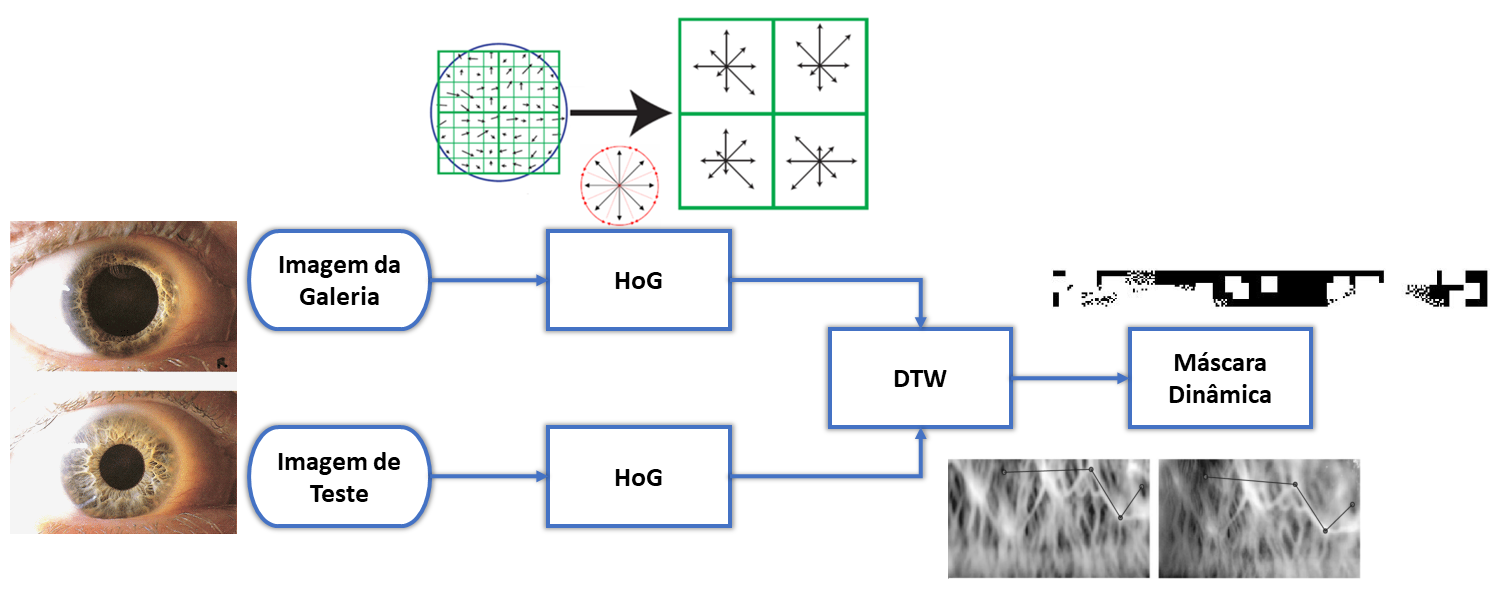Dynamic Time Warping in Iris Biometric Recognition Process
Keywords:
dynamic time warping, equal error rate, histogram of oriented gradients, iris recognition, pupil light reflexAbstract
In general, iris recognition systems with linear normalization model ignore the Pupil Light Reflex – PLR. The PLR is responsible for adjust light intensity reaches the retina and causes nonlinear iris contraction and dilation movements that generates significant differences between enrolled images and tests images. This paper has proposed a method to reduce the influence of iris dynamics examined by decidability (d) and Equal Error Rate (EER), obtained in the comparison between iris codes in different states of dilation. The method has used the Dynamic Time Warping (DTW) technique to compare the Histograms of Gradients Oriented (HoG) vectors extracted from the iris texture. In this way, the most discriminated characteristics between test images and the gallery had been aligned and compared, considering a nonlinear deformation of the iris tissue caused by the PLR. The experimental results, using dynamic images, indicate the system performance worsens when compared to images in different states of contraction. For a direct comparison between iris well contracted with well dilated iris the proposed method improves the decidability from 3.50 to 4.39 and the EER from 9.69% to 3.36%.
Downloads


